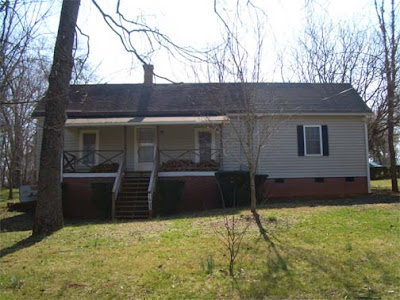Are you planning a remodel your historic home? Think again when contemplating any of the below actions. They could potentially take away from the historic integrity and character of your home. Furthermore, implementing some of these changes may disqualify you from receiving preservation tax credits, whether they be local, state or federal. I'll do another post introducing preservation tax credits, but for now, reconsider doing any of the following:
1. Replacing original windows
Original windows are one of your home's most important character-defining features. Replacing them destroys the integrity of the historic property and deprives the home of its charm and history. I always prefer the look of original windows as opposed to newer aluminium or vinyl replacements. If replacement is absolutely necessary and there is no option for restoration, replace in-kind with windows of the same material, profile, sash configuration and size.
2. Incompatible additions
If adding onto your home, make sure that the addition does not detract from or overwhelm the original portion of the house. It should be compatible in style, materials, scale and massing but not so identical that it cannot be distinguished from the original main block.
3. Enclosing or screening porches that were originally built to be open
It is tempting to screen-in porches, especially when living in the South, but enclosing porches and screening them obscures the original appearance.
4. Covering original exterior materials in vinyl or synthetic siding
The charm of your home will definitely be impacted if you cover the original clapboards or wood siding with vinyl. Vinyl siding also off-gases and will only last around 20-30 years. Instead, you should seek to preserve the original wood, repair where you can and replace the boards in-kind that are rotted out. Make sure to have a good professional paint job in order to protect exterior siding from the elements.
5. Changing the fenestration patterns of the building to where the original is no longer evident
This means changing the patterns, sizes, and configurations of bays on your home's elevations. This alters the original style, feel and look of the house, impacting its integrity.
6. Replacing original light fixtures (if the old ones are still in good working order and safe)
This is a personal pet peeve of mine. I love original light fixtures as long as they remain safe to use and the wiring is up to date. Many were fabricated out of copper, wrought iron, steel coated porcelain enamel or other metal that outlasts many modern fixtures.
7. Adding architectural features or making interior/exterior changes that are not appropriate for the style and age of your home. For example, adding exterior gingerbread trim or decorative Victorian brackets to a modest bungalow or stained-glass windows to a country farmhouse. These features are out of place and out of character with the style of the home and, furthermore, they can present a false sense of history, leading future generations that live in the house to believe the feature had always been there.


